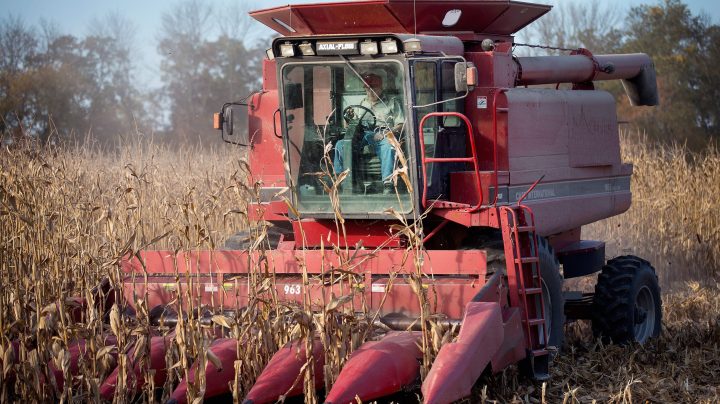
Farm income projected to rise again

American farmers are having a good year. That’s the headline from the USDA’s updated Farm Sector Income Forecast, which now anticipates that high commodity prices and other factors will push U.S. farm income up nearly 14% for 2022 over last year. That’s despite record increases in the cost of things like fertilizer, fuel, labor and other agricultural inputs.
Agricultural economists, like Todd Kuethe at Purdue, look to the USDA’s forecast for a snapshot of the farm economy.
“The way that we think about things like GDP or unemployment right as sort of being broad measures of the economy, this is one of the best measures of what is the financial health of the farming sector,” Kuethe said.
And it looks like that sector is faring pretty well.
When you account for inflation, net farm income is still projected to grow by more than 7%.
Bob Maltsbarger at the University of Missouri said drought conditions around the world are playing a role. So is Russia’s war in Ukraine.
“With the limited access for Ukrainian farmers to harvest all of their crop as well as different disruptions for trade,” he said.
Maltsbarger said the global supply of wheat, corn and soybeans has been tighter, driving up the prices farmers command for those crops.
“That’s good for farmers, for this year,” he said.
The long term picture could look different.
Bernt Nelson, an economist with the American Farm Bureau Federation, said the forecast also found record increases in the cost of things like livestock feed and fertilizer.
“We have that pushing our prices higher, naturally, from inflation,” he said.
And those rising costs tend to be pretty sticky, and will stay high when commodity prices moderate.
Plus, Nelson said farmers and ranchers do a lot of borrowing.
“So when the cost of borrowing that money increases, it definitely puts an increased burden on our farmers,” he said.
That increase, of course, is a result of the Fed’s interest rate hikes.
In the coming year, Nelson said higher borrowing and production costs could catch up with farmers, making it harder to maintain those profits.
There’s a lot happening in the world. Through it all, Marketplace is here for you.
You rely on Marketplace to break down the world’s events and tell you how it affects you in a fact-based, approachable way. We rely on your financial support to keep making that possible.
Your donation today powers the independent journalism that you rely on. For just $5/month, you can help sustain Marketplace so we can keep reporting on the things that matter to you.











